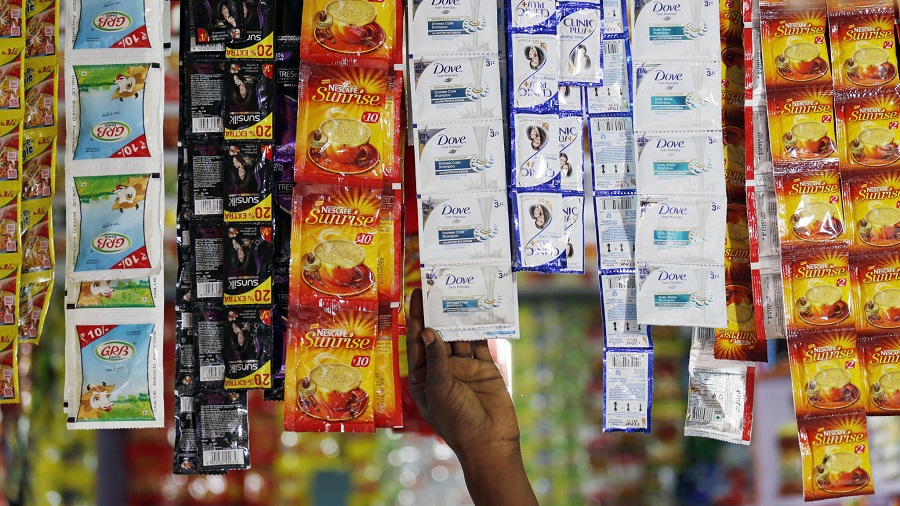The Covid-19 pandemic interrupted Nigeria’s U-shaped recovery from the 2016 recession. As a result, 2021 has only seen jobless growth and high inflation that plunges disposable income. Hence, it is only formidable thinking for organizations to look for alternative measures in achieving profitability in the world’s poverty capital. Therefore, the rule of the game is simple, innovate or die. Recently, ‘sachetization’ has been seen as an audacious solution to the case of economic degradation.
Sachetization can be seen as a response by entrepreneurs/ organizations to a falling aggregate demand primarily caused by a reduction in purchasing power and an increase in economic misery. It entails the rebranding of products into smaller packages (sachets) with the same quality but a reduced price. We can see examples in products such as Dettol, Baileys, Fresh Yo and Chivita.
While it is clear that FMCG seriously considers sachetization as an option, this innovative thinking is not limited to the consumer industry, as telecommunication and FinTech companies have catered for bundles that could be easily purchased by the poor.
READ: 39 million Africans could possibly slip into extreme poverty this year – AfDB warns
According to data obtained from Statista, 25 to 40 million smartphones are used in Nigeria. Bear in mind that one Nigerian may have 2 to 3 smartphones with a population of over 200 million. Hence, these figures are disheartening, to say the least.
Regarding financial Technology, the sachet version of mobile applications and mobile money can be seen through the establishment of agent bankers equipped with a POS machine and other devices to cater to the needs of the majority of Nigerians.
To put it in proper context, NDIC spokesman made a shocking revelation that only 2% of Nigerians have more than 500,000 in their accounts. This situation is expected to get worse because of the pandemic and it gives a better understanding of the reduced purchasing power of individuals.
READ: Female unemployment rate in Nigeria rises to 35.2% in Q4 2020
It is worth mentioning that Sachetization appears amid poverty and is primarily driven by the survival instincts of entrepreneurs. The debate about whether sachetization is a saviour or a menace is a heated topic amongst scholars. Some antagonists say that it is a proxy for poverty that should not be promoted while others say it is a package meant for children. The protagonist articulates its profit generation capacity as a major merit, especially in this capitalist society.
According to Titus Gado, Production and Capability Manager at Chi Limited, sachetization has a strong correlation with profitability in companies. He said:
“Dangote’s household portfolio uses this strategy. The goal is affordability. Over 70% of the population in Nigeria and Africa live below the poverty line. Premium products are great, but the question is are they affordable? As a manufacturing professional, I will prefer to deploy a strategy that can make this premium product available and affordable. Hence, the need to sachetize. Profitability has an extensive relationship with market shares. If it is available and affordable, consumers will go for it, and if they do, your sales increases, and if this happens your profit margin increases.”
READ: Unilever Nigeria’s 9 months financial report shows drastic profit decline
When asked about further innovation around the poverty climate of Nigeria, he said “using the Maslow’s hierarchy of needs, majority of the population in Nigeria are within the first 3 status. Any wise business owner should target this person. Just like the politicians do. If you can create product portfolios that can target these people, you will be setting up your business for a boom.”
Paul David, Post Graduate Researcher at Covenant University disagreed with the idea that ‘sachetization is a package meant for children,’ saying:
“Sachetization is not targeted to the child audience, but for the larger, poorer and vulnerable communities who do not have access to monetary resources, as well as technology.”
He further opined that “the central idea behind sachetization is creating products in smaller quantities for much smaller income groups to access, which implies its application to several spectra of consumer goods, whether manufactured (FMCG) or tech-enabled.”
Paul laid emphasis on the growing adoption of sachetization strategies as a way of ensuring the survival and profitability of firms, saying: “A lot of research is going into how sachetization can impact fintech and other industries, especially in India and South Asia. However, it will be extremely difficult for luxury brands to sachetize – one thing is sure, there should be more research – strategical research – into how sachetization can be applied to numerous sectors.”
What this means
- Entrepreneurs who are facing challenges of Aggregate Demand in the poverty Capital of the World would either choose to innovate around economic misery or close up shop.
- It will not be surprising to see continuous adoption of this strategy by more FMCGs and other industries.
- SMEs can benefit from this strategy by creating innovative branding around their products. It is worth noting that sachetization is seen as a sign of an inferior good to some consumers. Hence, demand would reduce for sachet products once there is an adequate boost of aggregate demand or a more inclusive growth is ascertained.
















